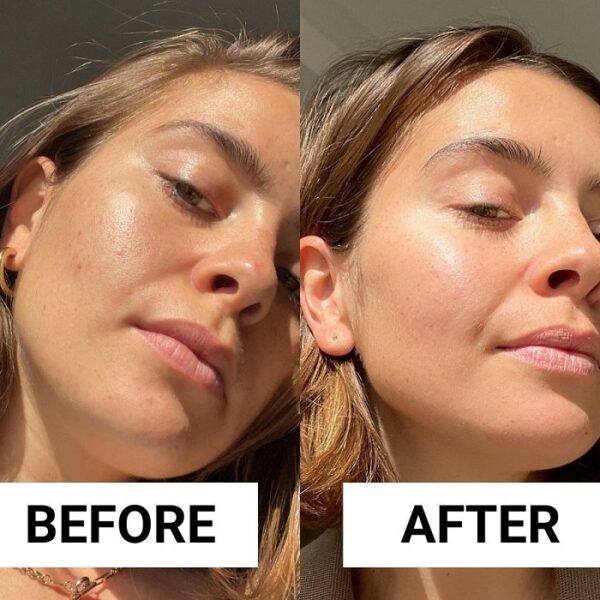Retinol Before and After: The Ultimate Guide to Transforming Your Skin
Retinol, a powerful derivative of vitamin A, has been one of the most talked-about ingredients in skincare for decades. From reducing fine lines and wrinkles to fading acne scars and brightening dull complexions, the “retinol before and after” results speak for themselves. Whether you’re new to retinol or looking to refine your skincare routine, understanding what to expect—and how to use it properly—can make all the difference in your skin’s transformation.
What Is Retinol and How Does It Work?
Retinol belongs to the retinoid family, a group of compounds derived from vitamin A that promote skin renewal. When applied topically, retinol increases cell turnover, stimulates collagen production, and accelerates the shedding of dead skin cells. This process helps smooth texture, even out tone, and improve overall radiance.
Dermatologists often call retinol the “gold standard” of anti-aging skincare for a reason—it works on multiple layers of the skin, making it effective for both early and advanced signs of aging.
Retinol Before and After: What to Expect
The visible transformation from retinol use doesn’t happen overnight. The skin needs time to adjust, renew, and rebuild collagen. Here’s what you can typically expect during your retinol journey:
Week 1–2:
You might notice mild dryness, redness, or peeling—signs that retinol is starting to work by speeding up cell turnover. This is normal and temporary.
Week 3–4:
Texture begins to smooth out, small blemishes may purge, and dullness starts to fade. Skin may look fresher and more radiant.
Month 2–3:
Fine lines and pigmentation begin to improve. Pores appear smaller, and skin feels firmer. The “retinol glow” starts to appear—healthy, luminous, and even-toned.
Month 4 and Beyond:
Collagen production increases, reducing deep wrinkles, acne scars, and uneven tone. Consistent use delivers the long-term, transformative results shown in most “retinol before and after” photos.
Real Retinol Results: Visible Changes in Skin
People who consistently use retinol report smoother, clearer, and more youthful-looking skin. The most common before-and-after improvements include:
- Reduction of fine lines and wrinkles: Retinol boosts collagen and elastin, visibly softening crow’s feet and forehead lines.
- Fading of dark spots and pigmentation: It targets uneven tone caused by sun damage, acne scars, and hormonal changes.
- Clearer complexion: By unclogging pores, retinol helps prevent breakouts and reduces blackheads.
- Refined texture: Skin becomes smoother, tighter, and more luminous with regular use.
- Improved firmness: Collagen renewal leads to plumper, more resilient skin.
How to Use Retinol Safely and Effectively
To achieve the best results and avoid irritation, follow these dermatologist-approved tips for introducing retinol into your skincare routine:
- Start slow: Begin with a low concentration (0.25–0.5%) two to three times a week. Gradually increase frequency as your skin adjusts.
- Apply at night: Retinol can make your skin more sensitive to sunlight, so use it as part of your evening routine.
- Use a moisturizer: Follow retinol with a nourishing moisturizer to reduce dryness and peeling.
- Avoid mixing actives: Don’t combine retinol with exfoliating acids or vitamin C in the same routine.
- Wear sunscreen daily: SPF 30 or higher is essential to protect your newly renewed skin cells from UV damage.
Common Myths About Retinol
Myth: Retinol thins your skin.
Truth: Retinol actually thickens the deeper layers of the skin by stimulating collagen production.
Myth: Retinol causes permanent peeling.
Truth: Peeling is a temporary sign of adjustment. Once your skin builds tolerance, it becomes stronger and smoother.
Myth: Only mature skin needs retinol.
Truth: Retinol benefits all ages. Starting early helps prevent fine lines, acne, and pigmentation before they develop.
Who Should Use Retinol?
Retinol is suitable for most skin types—dry, oily, combination, and even sensitive—when introduced carefully. However, pregnant or breastfeeding women should consult a dermatologist before using retinoid products.
If you have severe acne, melasma, or signs of premature aging, retinol can be particularly transformative. Dermatologists often recommend starting with an over-the-counter formula before moving to prescription-strength retinoids.
Best Skincare Routine with Retinol
Here’s a simple nighttime routine to maximize retinol benefits:
- Cleanse: Use a gentle, hydrating cleanser.
- Dry completely: Wait until your skin is fully dry before applying retinol to reduce irritation.
- Apply a pea-sized amount: Focus on your forehead, cheeks, and chin.
- Moisturize: Lock in hydration immediately after.
- Sunscreen (next morning): Never skip SPF to protect your renewed skin.
Retinol vs. Other Active Ingredients
- Retinol vs. Vitamin C: Retinol renews skin overnight; vitamin C brightens and protects during the day.
- Retinol vs. AHAs/BHAs: Acids exfoliate on the surface, while retinol works deeper to improve texture and firmness.
- Retinol vs. Peptides: Peptides hydrate and support collagen but don’t increase turnover like retinol does.
Combining these ingredients wisely (using vitamin C in the morning and retinol at night) can supercharge your results.
The Long-Term Benefits of Retinol
When used consistently, retinol delivers benefits that last beyond the visible improvements:
- Enhanced elasticity and firmness
- Protection against photoaging
- Reduced future breakouts
- Strengthened skin barrier
- Brighter, more even complexion
Expert Tip: The “Sandwich Method”
If you’re prone to sensitivity, try the “retinol sandwich” method—apply moisturizer before and after your retinol. This creates a protective buffer that minimizes irritation while maintaining efficacy.
Possible Side Effects and How to Manage Them
Mild redness, dryness, or flaking may occur when starting retinol. To minimize this:
- Use retinol every other night initially.
- Hydrate with ingredients like ceramides and hyaluronic acid.
- Avoid exfoliating scrubs or harsh cleansers.
- If irritation persists, pause for a few days and restart with a lower dose.
Retinol Before and After Results: What Real Users Say
Many users report visible improvements in as little as four to six weeks. Common testimonials include phrases like “my skin feels brand new,” “dark spots faded dramatically,” and “fine lines are barely visible.” Real-world before-and-after photos often show smoother, firmer, glowing complexions that look years younger.
FAQs
What age should I start using retinol?
Most dermatologists recommend starting in your mid to late 20s to prevent early signs of aging and improve skin texture.
Can I use retinol if I have acne?
Yes. Retinol unclogs pores, reduces inflammation, and helps fade acne scars, making it one of the best treatments for acne-prone skin.
How long does it take to see retinol results?
You may notice subtle improvements within four weeks, but full results usually appear after three to six months of consistent use.
Can I use retinol every day?
Yes, but build tolerance gradually. Start with 2–3 nights per week and increase as your skin adapts.Should I stop using retinol in summer?
No, but always wear sunscreen daily to protect against increased sun sensitivity.




